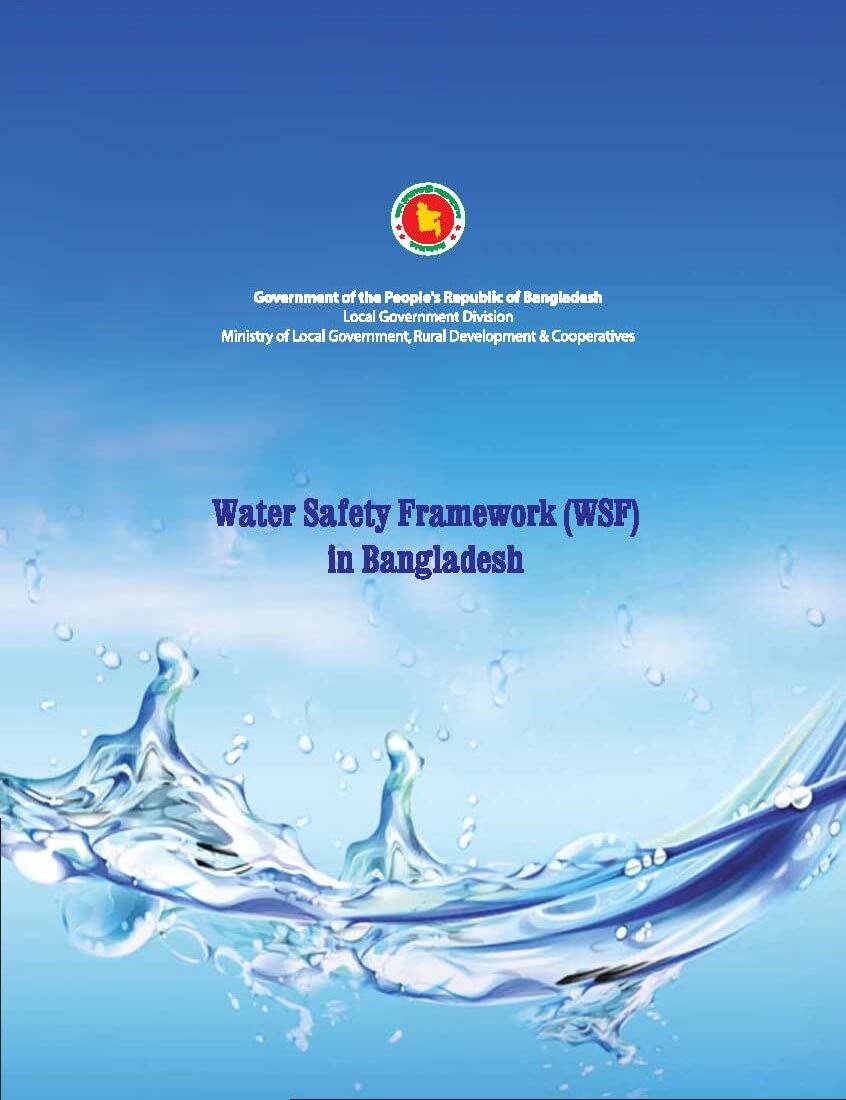The ‘Water Safety Framework (WSF) in Bangladesh’ has been prepared based on WHO’s ‘Water Safety Framework (WSF)’ approach and in consultations with the sector experts, stakeholders, professionals and water service providers to ensure the safety of drinking water. The WSF comprises three components: (i) Health Based Targets (HBTs), (ii) Water Safety Plan (WSP) and (iii) Surveillance. Bangladesh has adopted the revised national water quality standards as the Health Based Targets (HBTs) for water supplies. The National Forum for the WSS has approved the revised HBTs consisting of 40 parameters and targets of which five (four HBTs and one non-HBT) are the parameters of first priority category and the remaining 35 are the parameters of second priority category. Of the second category, 26 are based on the HBTs and nine on aesthetic consideration and acceptability reasons.
The Water Safety Plan (WSP) is an improved risk management tool designed to ensure the delivery of safe drinking water through the risk management approach by accommodating all steps in water supply from source to the point of consumption. In Bangladesh the WSP was initiated as a pilot program in the rural water supply system in 2005. Gradually, technology-specific WSPs, monitoring tool, and sanitary inspection tools were developed. In 2008, the urban water supply systems started implementing the WSPs in the urban areas. At the institutional and policy levels, institutional mapping and policy gaps were identified and the Vetting Guidelines for the WSS and Sector Development Plan were made available to guide and streamline the sector to ensure the quality of water. Prompted by the favourable policy environment and institutional focus, the DPHE has, of late, scaled up the WSPs in the Pourashava Piped Water Supplies, Rural Piped Water Supplies and different point sources with technical assistance from the WHO. Besides, some NGOs are implementing the WSPs in their respective project areas.


